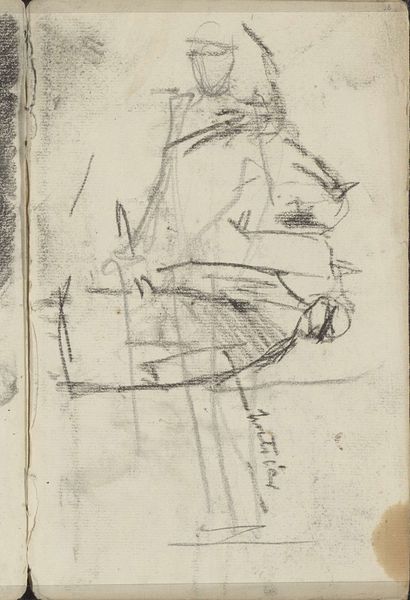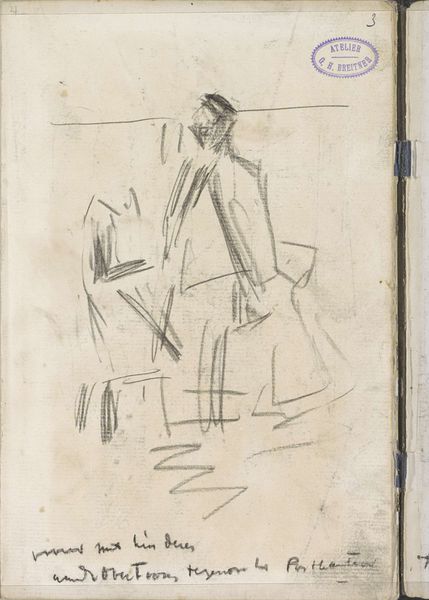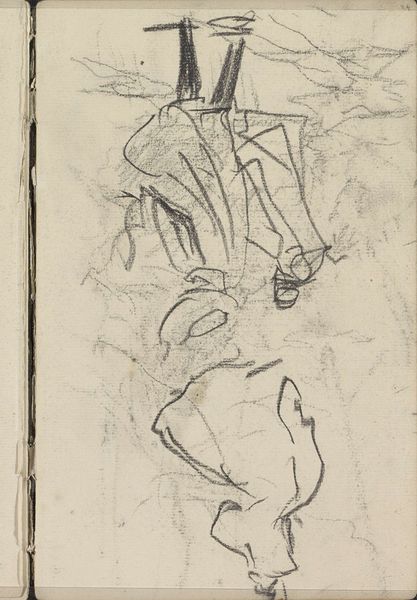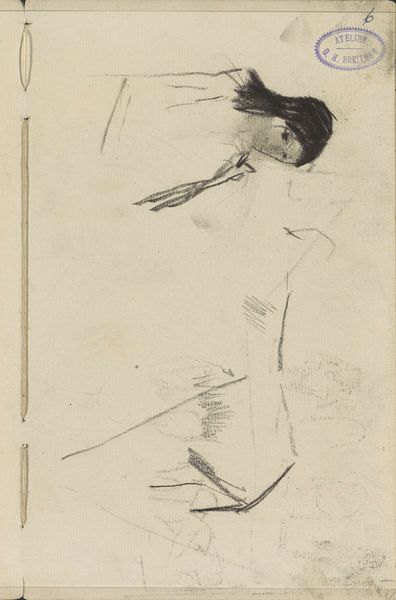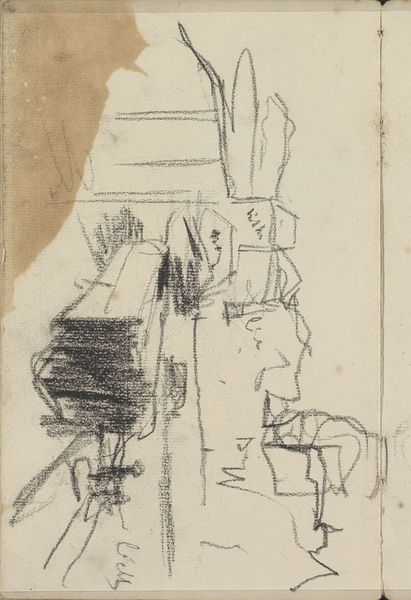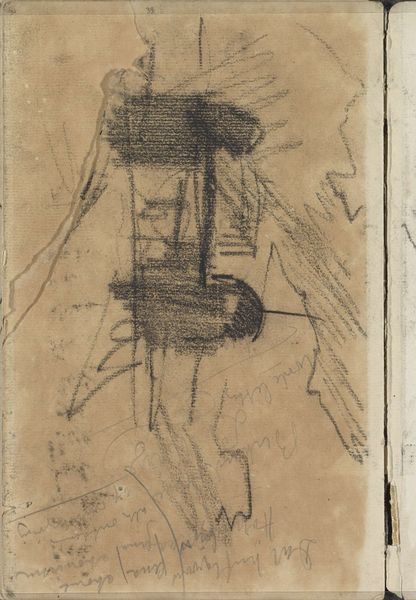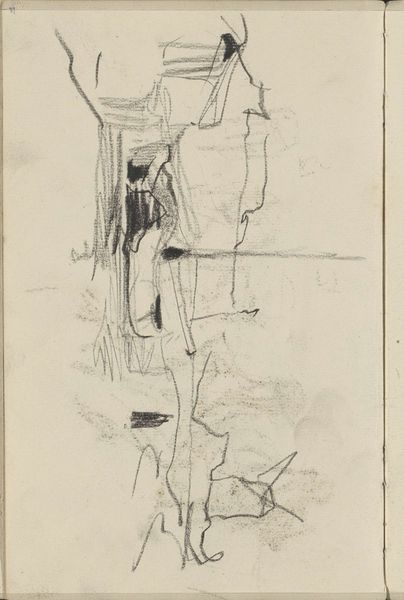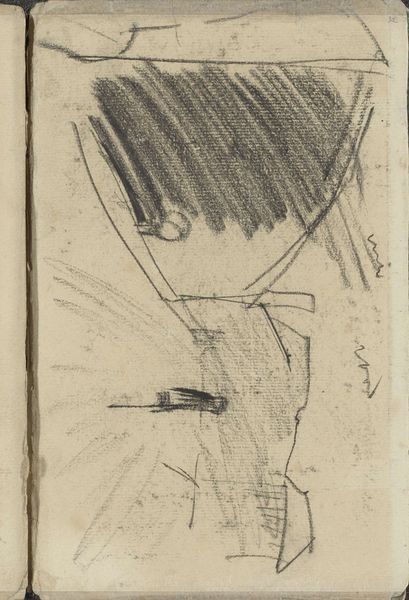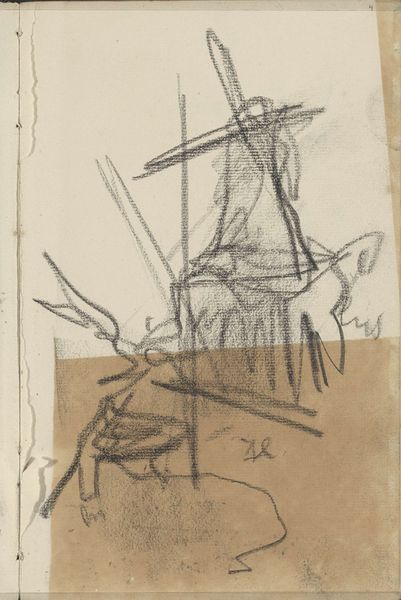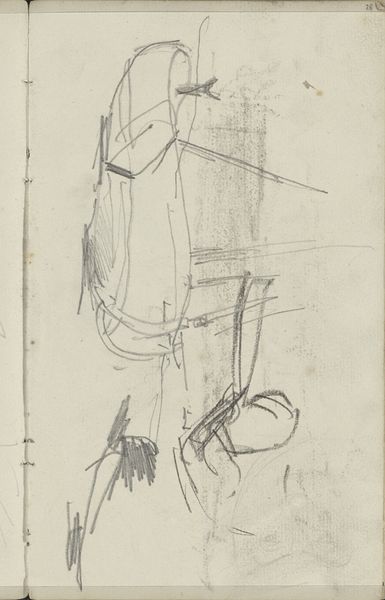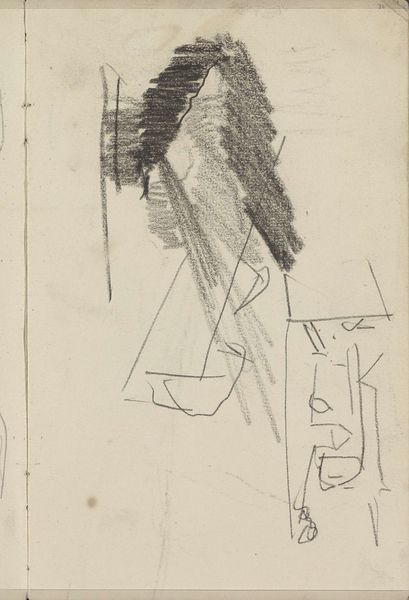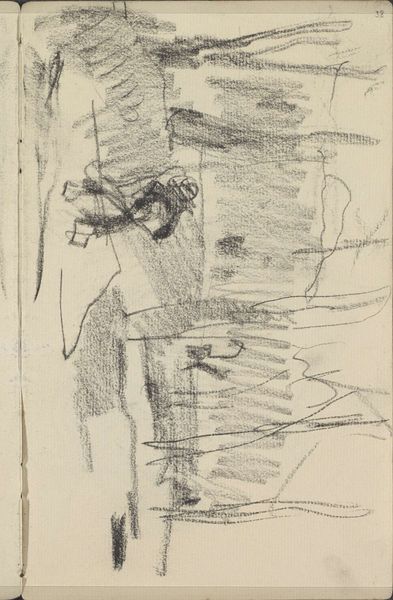
Copyright: Rijks Museum: Open Domain
Editor: This is "Woman and a Rooster" by George Hendrik Breitner, a pencil drawing dating from around 1886 to 1903. The loose sketch-like quality makes me wonder what Breitner was trying to capture. How do you see this drawing fitting into its time period? Curator: This work offers a glimpse into the changing social role of art during the late 19th century. Breitner, associated with the Amsterdam Impressionists, sought to depict everyday life. Note how the sketch prioritizes capturing a fleeting moment, rather than aiming for idealized beauty. Editor: So, the "everyday" is the rooster and… an ordinary woman? Was there a bigger idea or message communicated here, with a woman and a rooster co-existing in this scene? Curator: Consider how urban life was transforming, drawing people and animals into closer proximity. Breitner frequently depicted working-class subjects. By placing this woman and rooster together, seemingly without sentimentality, what kind of statement is Breitner making about social realities? The Rijksmuseum itself was founded during this era. How did institutions like museums shape the public's understanding and appreciation of these modern subjects? Editor: That makes me think about who was represented and seen in art at this time... it makes you wonder about the power dynamics at play. So the act of sketching this woman and rooster is almost political. Curator: Exactly. Breitner's sketches reflect broader questions about representation and visibility. What purpose did images of working-class life serve and whom did they serve it to? Editor: I see. Thanks; it gives me a totally different lens to view it through! Curator: Indeed. And by considering these drawings within a framework of art history, you can look at museums and social structures critically.
Comments
No comments
Be the first to comment and join the conversation on the ultimate creative platform.
